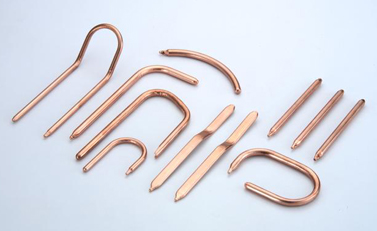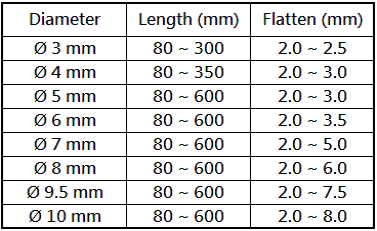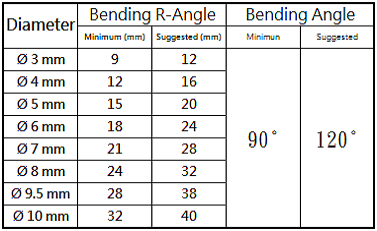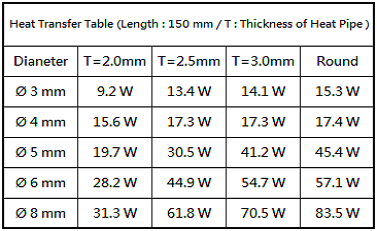THERMAL
Heat Pipes & Vapor Chamber / Heat Pipes BACK
 Heat Pipes
Heat Pipes
Heat pipes are thermal super-conductors. The effective thermal conductivity varies with heat pipe length, and can approach 100,000 W/m K for long heat pipes, in comparison with approximately 400 W/m K for copper. At the hot interface of a heat pipe a liquid in contact with a thermally conductive solid surface turns into a vapor by absorbing heat from that surface. Vapor then travels along the heat pipe to the cold interface and condenses back into liquid - releasing the latent heat. Liquid then returns to the hot interface through either capillary action, centrifugal force, or gravity, and the cycle repeats.
Reliability is very important for many heat pipe applications. Rego's heat pipes go through many rigid quality tests to assure its performance. Our quality assurance tests includes,
-Thermal Cycle Test
-Burn-In Test
-Helium Leakage Test
Rego’s unique sinter / powder heat pipes perform better with lower thermal resistance than our competitors (Figures shown in the graphic). Performances are better in both test cases.
 Product Dimension
Product DimensionRego offers a full range of heat pipes from ø3 to ø10 mm, length from 80 up to 600mm. Flattened heat pipes are available from a minimum thickness of 2.0mm to any lager thickness and round type. You can choose the appropriate heat pipes in diameter, length and flattened thickness according to your design. Send us your drawing. Let's make it work!
 Bending R Angle & Bending Angle
Bending R Angle & Bending AngleBending angle affects heat pipes' thermal performance. The figure shows the restriction and the suggested bending angle / bending R angle according to different diameters. Please take this chart into consideration during your design phase.
 Maximum Heat Transfer (Q-max)
Maximum Heat Transfer (Q-max)Test Method (according to a 150mm heat pipe test sample):
T ( Heat Source ) = 70 ± 5°C
D1 = 50 mm in contact with the heat pipe
D2 = 30 mm in contact with the heat pipe
T ( Ambient ) = 25 ± 3°C
Find Q-max while ΔT = 5°C ( ΔT= T1 - T2 )
Q-max is affected by flatten thickness. Round type heat pipes are better in thermal performance than flat ones. Thick, flat heat pipes transfer more heat than flat, thinner ones. It is important to take these factors into consideration at your design phase. You can simply contact us. Let's make it work!



